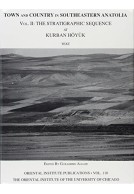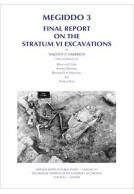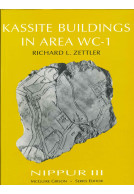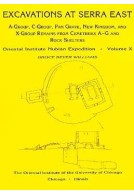Google Books previews are unavailable because you have chosen to turn off third party cookies for enhanced content. Visit our cookies page to review your cookie settings.
Town and Country in Southeastern Anatolia, Volume II (Hardback)
The Stratigraphic Sequence at Kurban Hoyuk
Imprint: Oriental Institute of the University of Chicago
Series: Oriental Institute Publications
Pages: 438
ISBN: 9780918986658
Published: 1st January 1990
Script Academic & Professional
Series: Oriental Institute Publications
Pages: 438
ISBN: 9780918986658
Published: 1st January 1990
Script Academic & Professional
You'll be £24.95 closer to your next £10.00 credit when you purchase Town and Country in Southeastern Anatolia, Volume II. What's this?
+£4.99 UK Delivery or free UK delivery if order is over £40
(click here for international delivery rates)
Order within the next 7 hours, 19 minutes to get your order processed the next working day!
Need a currency converter? Check XE.com for live rates
(click here for international delivery rates)
Order within the next 7 hours, 19 minutes to get your order processed the next working day!
Need a currency converter? Check XE.com for live rates
Until recently, the lower Euphrates basin in southeastern Turkey had remained closed to research. The region was virtually unexplored, an archaeological terra incognita. This situation was particularly regrettable since downstream in northern Syria recent archaeological work along the Euphrates basin had demonstrated beyond doubt the historical importance of the area. A dramatic change occurred in the second half of the 1970s as a result of the announcement of plans by the Turkish government to build two additional dams on the Euphrates river as part of its long-term development program for southeastern Anatolia, the Güneydo©u Anadolu Projesi. This allowed comprehensive surveys to be made of the areas and sites to be destroyed by the reservoirs of the dams in question, the Karakaya and Karababa (now Atatürk) dams, and ultimately for the start of an international archaeological salvage effort within the reservoir areas. As part of this effort a number of Turkish and foreign expeditions were fielded, and as a result of their work a much clearer picture than was heretofore possible of the archaeological history of an important region of the northern periphery of the Fertile Crescent has begun to emerge.
It is in this context that the Chicago Euphrates Archaeological Project of the Oriental Institute of the University of Chicago should be understood. It conducted excavations at one of the threatened sites, Kurban Höyük, and carried out surveys of its immediate environs. The site is located in the lower portion of the Karababa reservoir area and is one of several sites that hold the key for understanding the archaeological sequence of the lower portion of the Euphrates basin in southeastern Turkey. A complete picture of that sequence will only be possible when final reports are produced for important nearby sites, such as Samsat (the ancient metropolis of Samosata), Lidar Höyük, Gritille Höyük, Hassek Höyük, and Tille, among others. Of the sites being investigated Kurban offers neither the longest sequence, nor the broadest exposures overall, but what it does offer is a carefully excavated cultural sequence spanning the Chalcolithic and Early Bronze periods in the region, as well as the largest exposures yet available for the urban florescence of the Early Bronze Age in the Turkish lower Euphrates area and its decline - a phenomenon paralleled in regions farther afield in northern Syria and northern Mesopotamia.
Other titles in the series...
Other titles in Oriental Institute of the University of Chicago...



















